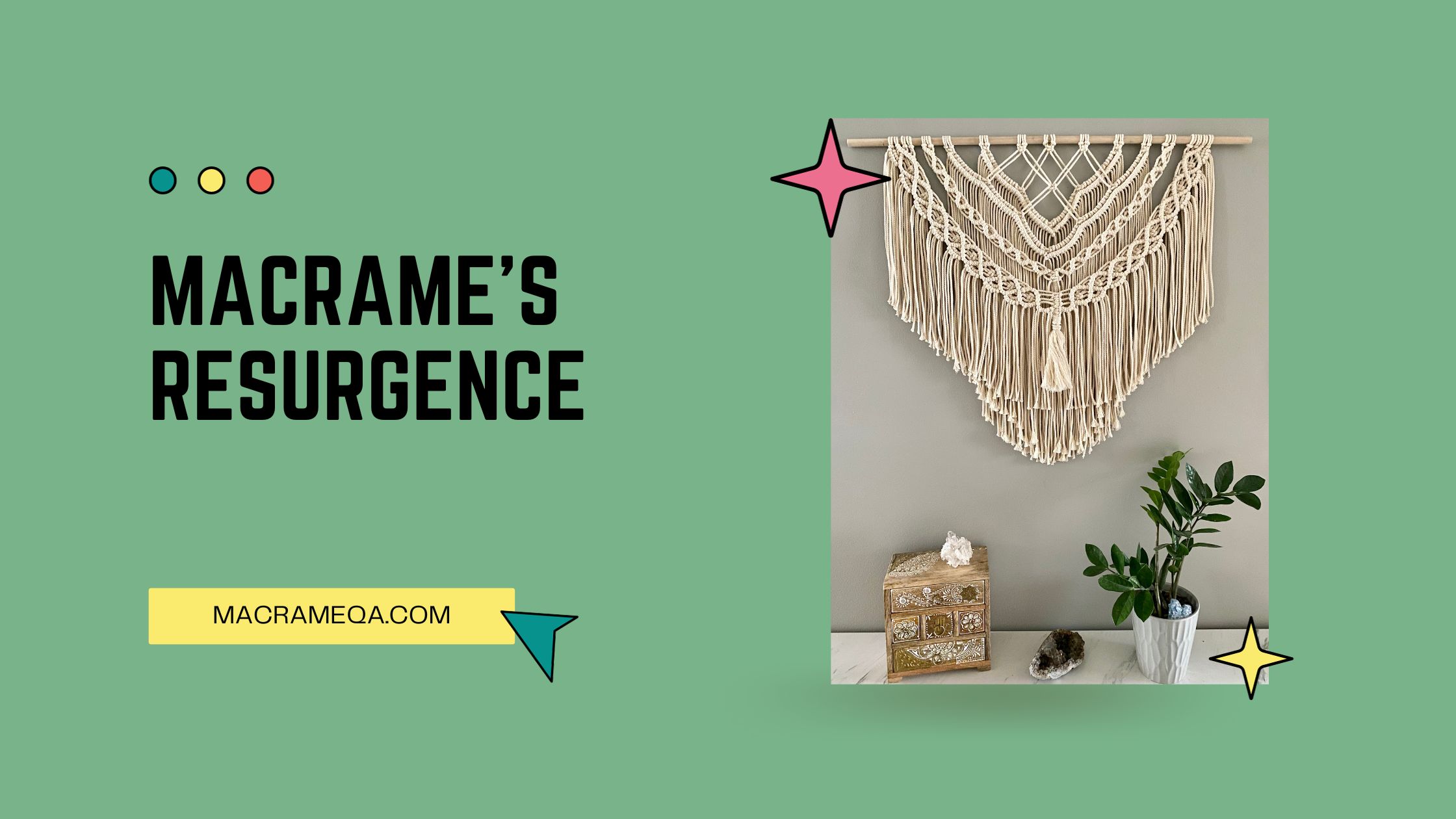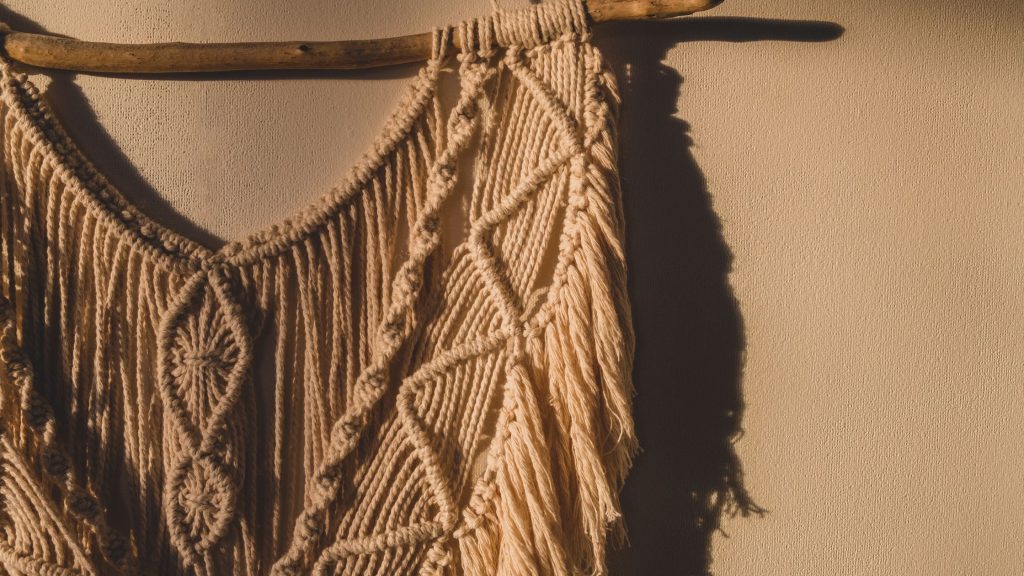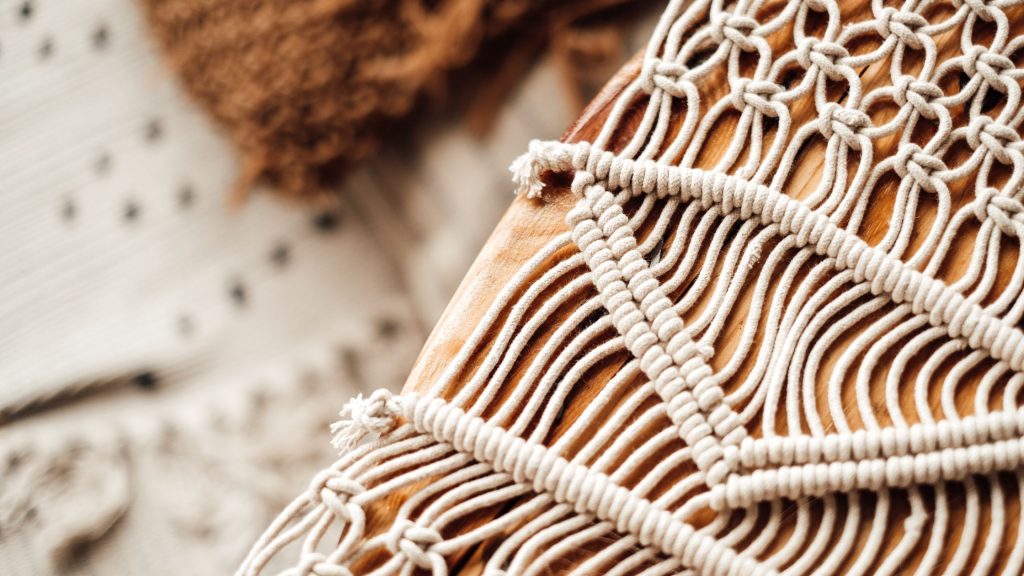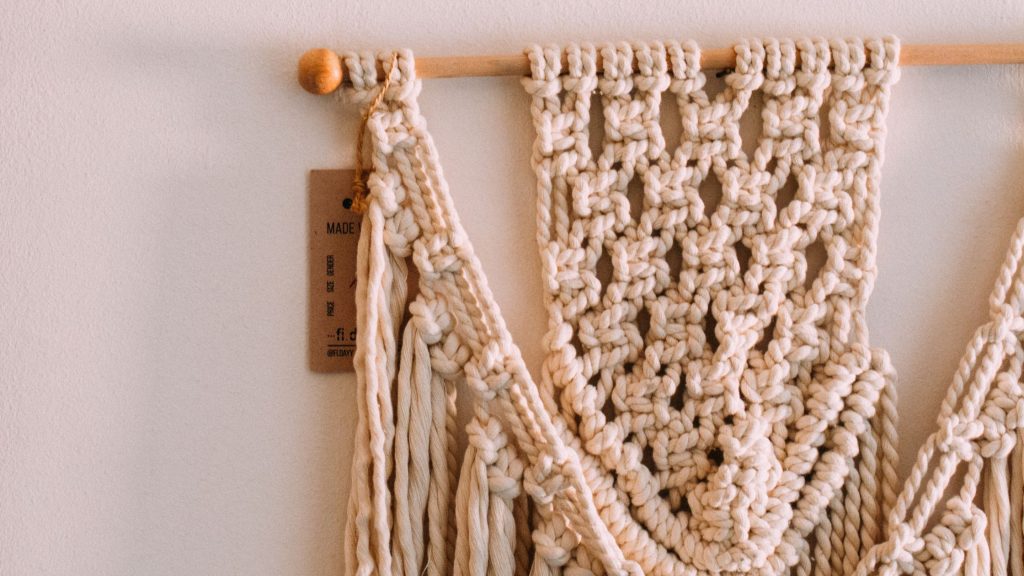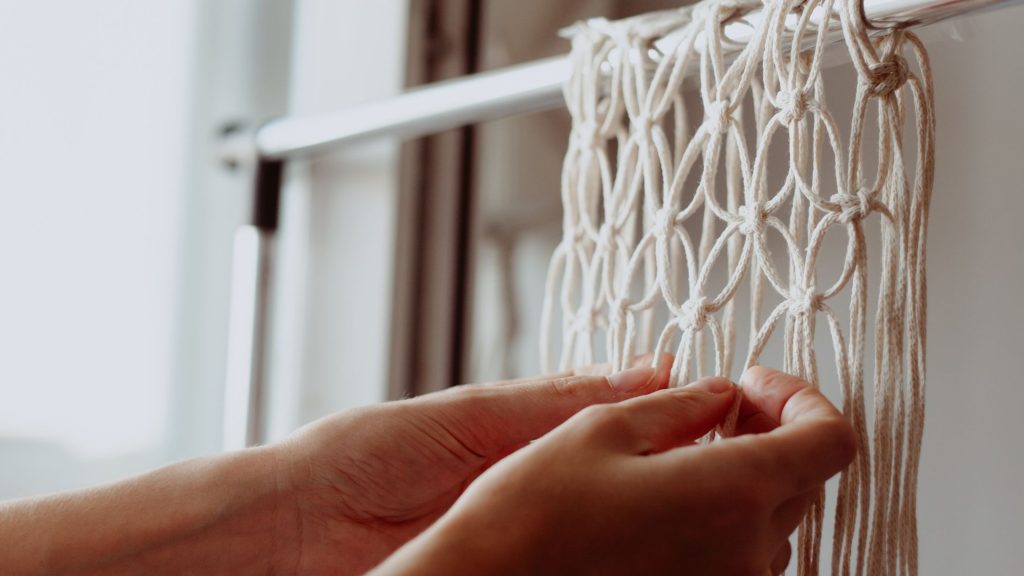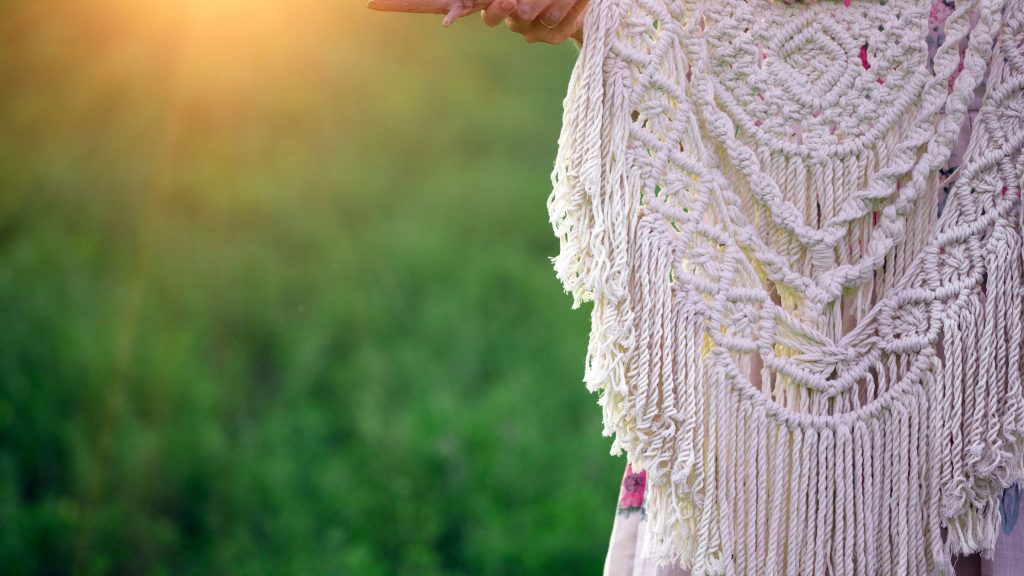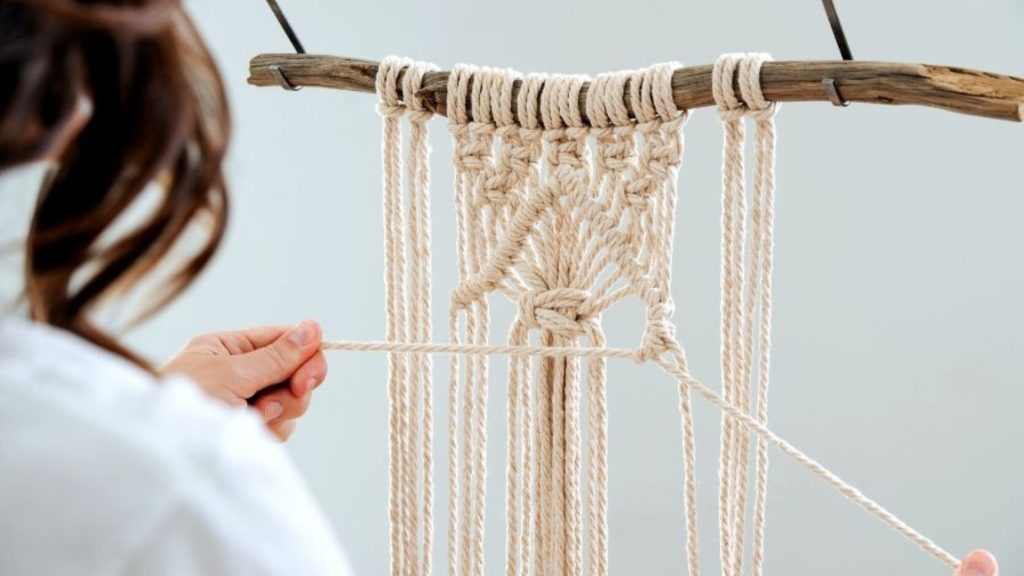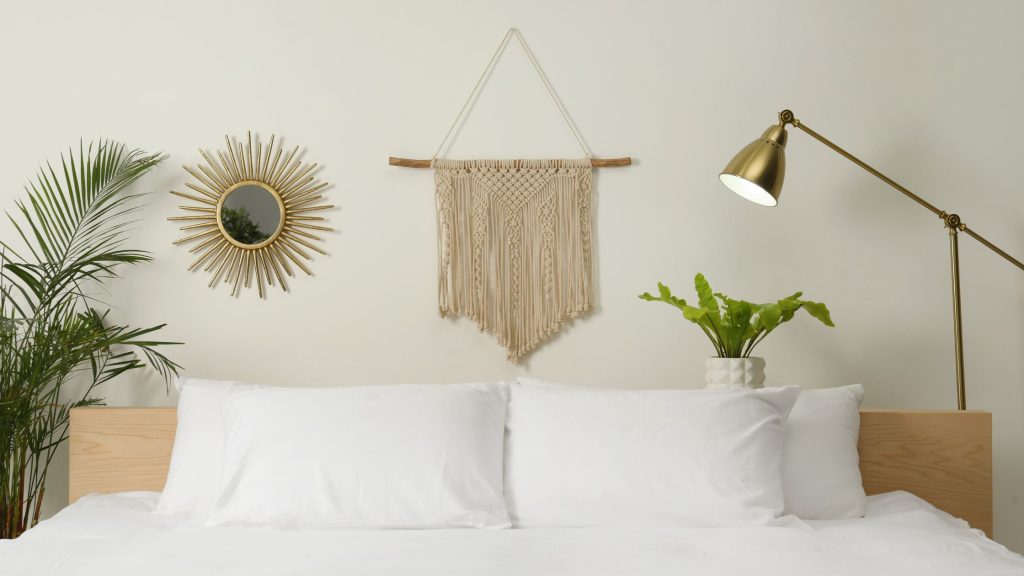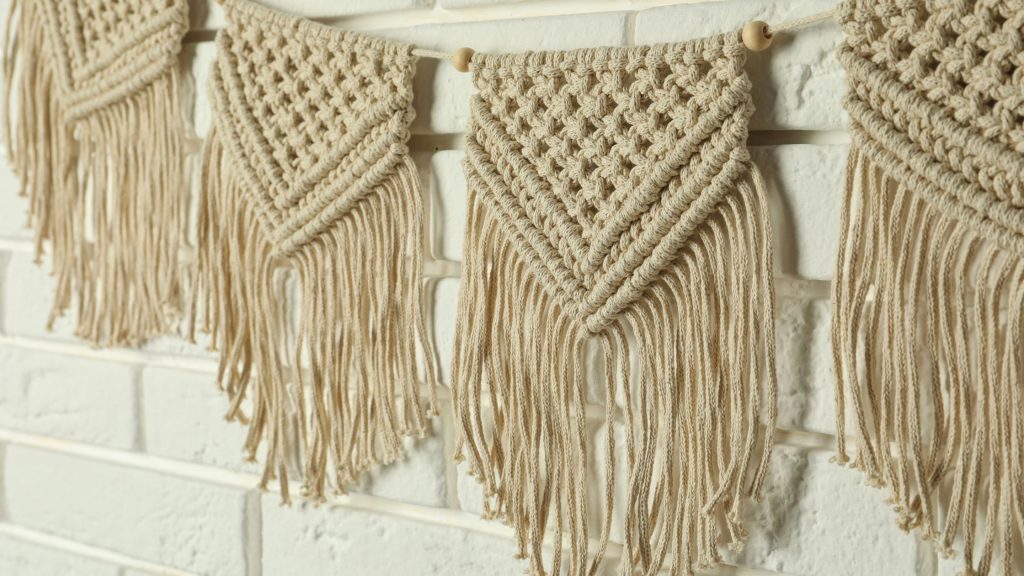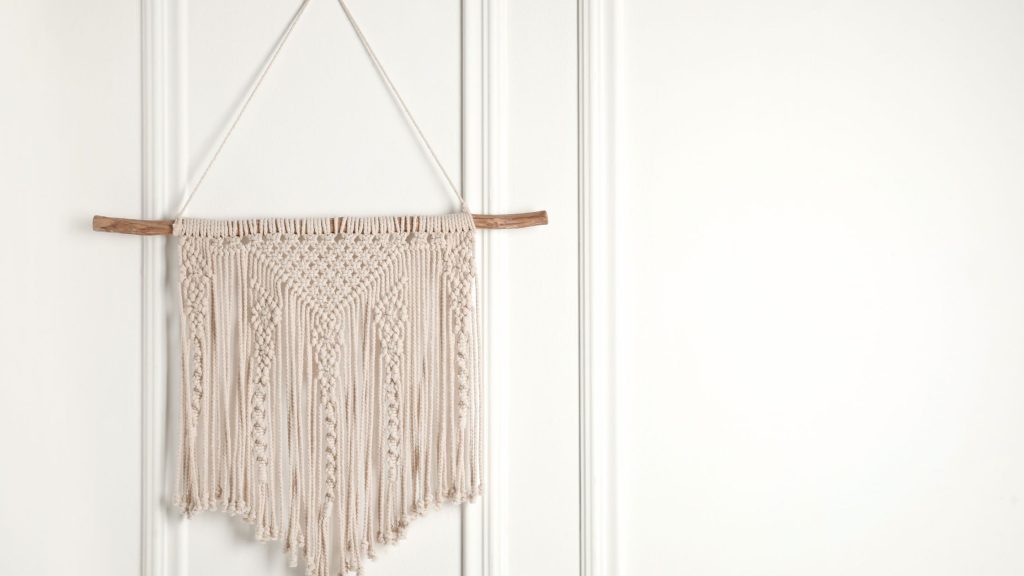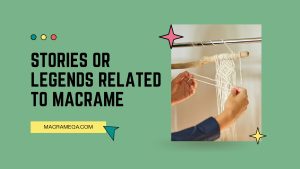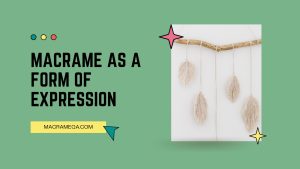Macrame, the ancient art of knotting cords to create decorative textiles, has experienced a remarkable resurgence in recent years. This captivating art form, once considered a relic of the past, has now found its way into modern homes and fashion. So, what events or trends triggered this renewed interest in macrame? From the rise of sustainability and the desire for handmade goods to the growing appreciation for bohemian aesthetics, there are a multitude of factors that have paved the way for macrame’s triumphant return. In this article, we will explore the historical events and trends led to macrame’s resurgence.
The Origins of Macrame
Macrame, the ancient art of knotting, has a rich history dating back thousands of years. Let’s take a journey through time to explore the origins of this beautiful craft.
Ancient Origins
Macrame has its roots in ancient times, with evidence of its practice found in various ancient cultures. Some of the earliest known examples date back to 13th-century Arab weavers who used intricate knots to create decorative fringes on their textiles. This technique eventually spread to Europe through trade routes, forming the foundation for what would later become macrame.
Renaissance and Colonial Period
During the Renaissance period, macrame gained popularity in Europe as a craft practiced by sailors. Sailors would pass the time at sea by creating intricate macrame designs, using the skills they learned from their Arab counterparts. With the colonization of the Americas, the art of macrame spread across continents, integrating with local cultures and evolving into unique styles.
19th-Century Victorian Era
In the Victorian era, macrame experienced a surge in popularity as a decorative art form. It was often used to create intricate and ornate designs for home decor, clothing, and household items. The delicate nature of macrame allowed for intricate detail, making it a perfect match for the opulent tastes of the Victorian era.
Decline of Macrame
Like any art form, macrame’s popularity waxed and waned over the centuries. Let’s explore the factors that contributed to its decline.
Industrialization and Mass Production
With the advent of industrialization and mass production in the 19th and 20th centuries, handmade crafts began to lose their appeal. The accessibility and affordability of machine-made goods led to a decline in the demand for intricate hand-knotted macrame pieces. As people sought convenience and cost-effective options, the art of macrame began to fade into the background.
Changing Fashion Trends
As fashion trends evolved, macrame fell out of favor. The minimalist aesthetics of the mid-20th century, with its sleek lines and simplicity, left little room for the intricate and elaborate designs of macrame. As modernity embraced clean and streamlined looks, macrame struggled to find its place in the ever-changing world of fashion.
Mid-20th Century Revival
Despite its decline, macrame experienced a significant revival in the mid-20th century, thanks to a combination of cultural and social factors.
Macrame in the 1960s
The 1960s counterculture movement played a significant role in bringing macrame back into the spotlight. The free-spirited and bohemian lifestyle of the era embraced handmade crafts as a form of self-expression and rebellion against mass-produced goods. Macrame, with its intricate designs and intricate knotting techniques, perfectly captured the essence of the era.
Influence of Counterculture Movement
The counterculture movement, with its emphasis on individuality, creativity, and self-sufficiency, provided the perfect platform for macrame to flourish. People sought to personalize their living spaces, clothing, and accessories, turning to macrame as a way to express their unique style and stand out from the mainstream. Macrame plant hangers, wall hangings, and jewelry became iconic symbols of the era.
Popularization in Art and Craft Fairs
The rise of art and craft fairs in the mid-20th century provided a platform for macrame artists to showcase their skills and sell their creations. These events celebrated handmade crafts and fostered a sense of community among artisans and craftspeople. Macrame, with its versatility and unique aesthetic, found a place in these fairs, capturing the attention of both artists and consumers alike.
Macrame in the Digital Age
With the advent of the internet and social media, macrame has found a new lease on life. Let’s explore the role of digital platforms in the resurgence of this ancient craft.
Online Communities and Tutorials
Online communities and platforms dedicated to macrame have created a space for enthusiasts, beginners, and experts to connect, learn, and share their love for the craft. Social media platforms, such as Instagram and Pinterest, are brimming with macrame tutorials, inspiration, and communities that foster creativity and collaboration. These online resources have made macrame accessible to a wider audience and have reignited interest in this age-old craft.
Social Media Trends and Influencers
The rise of social media influencers specializing in crafts and DIY has played a significant role in trends led to macrame’s resurgence. Influencers who showcase their macrame creations on platforms like YouTube and TikTok have inspired a new generation of crafters to pick up their knots and create their macrame masterpieces. The visually appealing and soothing nature of macrame videos makes it a perfect fit for social media trends, further fueling its popularity.
Sustainable and Eco-Friendly Movement
In recent years, there has been a growing interest in sustainable and eco-friendly crafts. Let’s explore how macrame aligns with this movement.
Growing Interest in Handmade and Sustainable Crafts
In an era of mass production and environmental concerns, there is a growing appreciation for handmade and sustainable goods. Macrame, with its reliance on natural materials like cotton, linen, and jute, embodies this ethos. By using organic and recyclable materials, macrame artists and enthusiasts contribute to a more sustainable and eco-friendly lifestyle.
Macrame’s Natural and Recyclable Materials
Macrame’s reliance on natural fibers and materials not only makes it an environmentally friendly craft but also adds to its aesthetic appeal. The textures and colors of organic materials bring a sense of warmth and earthiness to macrame creations. Additionally, the recyclable nature of these materials ensures that macrame pieces can be repurposed or composted, minimizing waste and reducing the carbon footprint.
Wellness and Mindfulness Trends
In an increasingly fast-paced world, wellness and mindfulness practices have gained popularity. Macrame, with its meditative and therapeutic qualities, has found its place in these trends.
Therapeutic Benefits of Macrame
Engaging in macrame can have numerous therapeutic benefits. The repetitive and rhythmic motions of knotting can induce a state of relaxation and calm, similar to the effects of meditation. The focus and concentration required in macrame allow one to be fully present in the moment, promoting mindfulness and helping to reduce stress and anxiety.
Meditation and Mindfulness Practice
With its emphasis on slow and intentional movements, macrame beautifully complements mindfulness and meditation practices. As individuals seek to create a sacred space for self-reflection and relaxation, macrame wall hangings and meditation mats have become popular choices. The process of creating something with their own hands adds an extra layer of meaning and intention to their meditative practice.
Interior Design and Home Decor Trends
Macrame’s intricate and textural qualities have made it a staple in interior design and home decor. Let’s explore how it aligns with current trends.
Bohemian and Scandinavian Aesthetics
Both the bohemian and Scandinavian aesthetics have gained significant popularity in recent years. Macrame, with its earthy and natural vibe, fits seamlessly into these styles. From macrame curtains to plant hangers, these pieces add an organic and cozy touch to any space while embracing the principles of minimalism and simplicity.
Use of Textures and Natural Elements
Texture is a key element in contemporary interior design, and macrame provides the perfect opportunity to incorporate it. Macrame wall hangings, rugs, and cushions add depth and character to a room, creating an inviting and tactile environment. The use of natural elements and materials in macrame further enhances the connection to nature, evoking a sense of tranquility and balance.
DIY and Personal Expression
Macrame offers a platform for creativity and personalization, allowing individuals to express themselves and create unique pieces. Let’s explore how this aspect has contributed to its resurgence.
Embracing Creativity and Personalization
In a world saturated with mass-produced goods, many individuals seek to incorporate unique and personalized items into their lives. Macrame provides a creative outlet that allows individuals to express themselves through knots and designs. Whether it’s customizing a wall hanging to match their personality or creating one-of-a-kind jewelry pieces, macrame empowers individuals to showcase their creativity and make a statement.
Crafters and Hobbyists
Macrame has captured the hearts of crafters and hobbyists worldwide. The versatility of the craft allows beginners to start with simple projects and gradually progress to more intricate designs. Additionally, the accessibility of macrame materials and tutorials makes it an attractive choice for those looking to explore their creative side. Crafters and hobbyists find joy and fulfillment in the process of creating something tangible with their own hands, and macrame provides the perfect platform for them to do so.
Inclusion and Empowerment
Macrame has emerged as a gender-inclusive craft, promoting creativity and confidence for individuals from all walks of life. Let’s delve into the transformative impact it has had on fostering inclusion and empowerment.
Macrame as a Gender-Inclusive Craft
Historically, crafts have been associated with specific genders, perpetuating gender stereotypes. However, macrame has broken these barriers and emerged as a craft that transcends gender norms. Men, women, and non-binary individuals are all actively participating in and contributing to the macrame community, creating a sense of inclusivity and breaking down societal expectations.
Promoting Creativity and Confidence
Engaging in macrame has been transformative for many individuals, instilling a sense of empowerment and confidence. The process of learning and mastering knotting techniques allows individuals to tap into their creativity and explore their artistic potential. As they witness their creations taking shape, a sense of accomplishment and self-assurance grows, encouraging them to embrace new challenges and express themselves authentically.
Macrame as a Form of Art
Macrame has evolved from a craft into a recognized form of art, with contemporary artists pushing the boundaries of its traditional techniques. Let’s explore how macrame has made its mark in the world of art.
Contemporary Artists and Installations
Contemporary artists have taken macrame to new heights, creating awe-inspiring installations that challenge our perception of the craft. Large-scale macrame installations have graced art galleries and public spaces, pushing the boundaries of size, form, and concept. These artists use macrame as a means of self-expression, exploring themes of identity, culture, and social issues.
Macrame’s Influence on Fiber Art
Macrame’s resurgence has breathed new life into the world of fiber art. Artists are combining macrame with other fiber art techniques such as weaving, knitting, and crocheting, creating unique and multidimensional pieces. Macrame’s intricate knotting adds texture and depth, complementing other fiber art techniques. This integration of macrame into fiber art has expanded the horizons of what is possible within the realm of textile and fiber arts.
Conclusion
In conclusion, macrame’s resurgence can be attributed to a combination of historical, societal, and cultural factors. From its ancient origins to its modern-day applications, macrame has proven to be a versatile craft that has evolved with the times. As we continue to embrace creativity, sustainability, and personal expression, macrame’s influence is bound to endure for generations to come. So pick up some rope, learn a few knots, and embark on your macrame journey to experience the wonder of this ancient art form.

